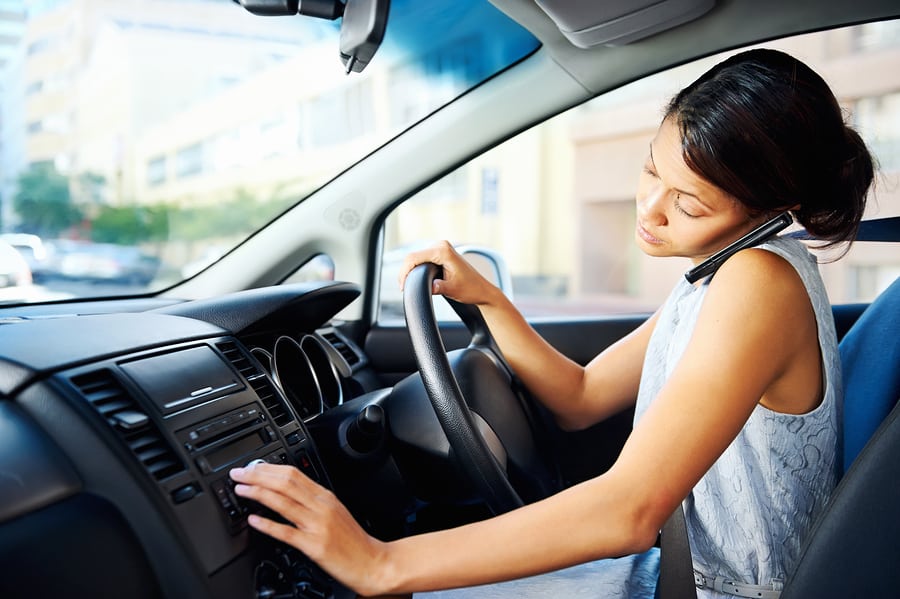Being a safe driver requires attentiveness, focus, and technique. However, drivers across the United States are becoming inundated with distractions. According to the National Highway Traffic and Safety Administration (NHTSA), in 2018 distractive driving accidents claimed 2,841 lives. The highest amount of casualties were drivers, 1730, but also 605 passengers, 400 pedestrians, and 77 cyclists lost their lives as a result of distracted driving.
Types of Distracted Driving
Distracted driving includes any and all activities that divert attention away from operating the vehicle like texting and talking on a mobile device, eating and drinking, adjusting your entertainment or navigation systems, grooming, or any other activities that garner your attention away from driving.
All non-driving activities, while operating your motor vehicle, elevate your risk of having an accident and injuring yourself or others. These three distractions are what create the risks of distracted driving according to the National Center for Injury Prevention and Control:
- Visual: not having your eyes focused on the road
- Manual: removing your hands from the steering wheel of the automobile
- Cognitive: losing mental focus on driving
There are some distracted driving incidents that appear to be more common. If you’ve been injured as of the result of a distracted driver, then speak with Lawyer Eugene Gitman for a free consultation to determine if you have the right to economic and non-economic damages.
Common Distracted Driving Accidents
A 2013 Erie, Pennsylvania insurer based study that examined data from the Fatality Analysis Reporting System and Insurance Institute for Highway Safety found that these were the top causes of distracted driving:
- Daydreaming, general distraction, and being lost in thought accounted for 62% of distracted driving accidents according to the analysis, and it the most common cause of distracted driving. It’s pretty common to zone out on long commutes or be lost in thoughts of the future or past while driving instead of focusing on the present moment. Some drivers take the same routes every day and go into auto-pilot mode, which could be dangerous.
- Using cellular or mobile devices accounted for 12% of all distracted driving. The National Safety Council reports that actually cell phone uses accounts for 26% of all car crashes. Though hands-free applications have gained popularity the NHTSA reports that any activity that defers your attention away from driving increases your risk of crashing.
- Distractions from outside your vehicle accounted for 7% of all distracted driving. These distractions may include rubbernecking, being fixated on an incident occurring outside of your vehicle, or reading advertisements, and noticing other images, persons, and activities in your peripheral vision that draw attention away from operating your car.
The data gathered in this study may not be sufficient because those involved in accidents may have been less likely to admit to being distracted and therefore the data often reflected the discernment of the officers submitting the reports after the accidents. Further studies will need to be conducted to determine exactly how dangerous each distracted driving activity is.
What to do if I’m injured in a distracted driving accident?
If you’ve been involved in a distracted driving accident, if the situation allows, then move to a safe place off the road before alerting the authorities. Once you’ve gotten to a safe location call the police, seek medical treatment, and gather statements and contact information from witnesses. A well-equipped attorney can also help decipher if your case can be litigated to help you cover medical expenses and other damages.







